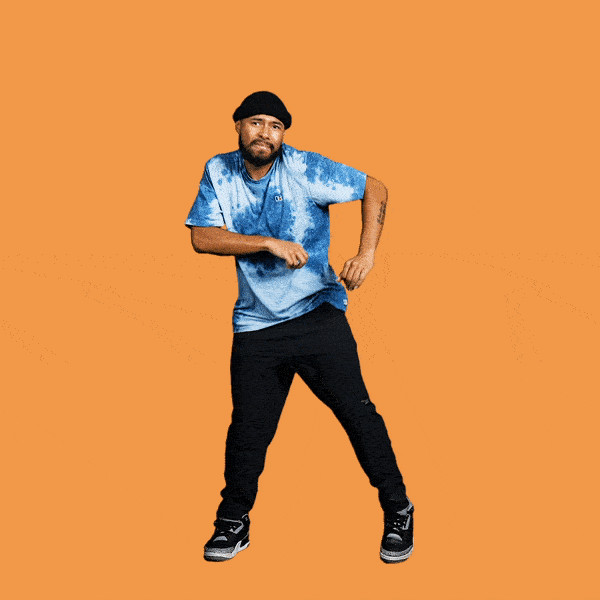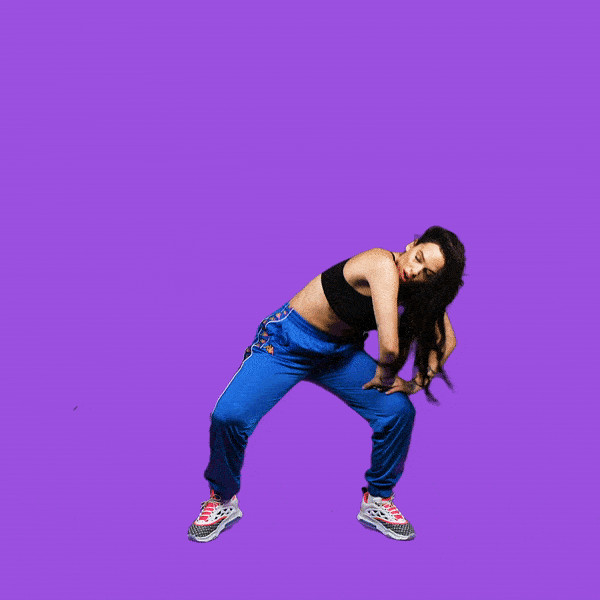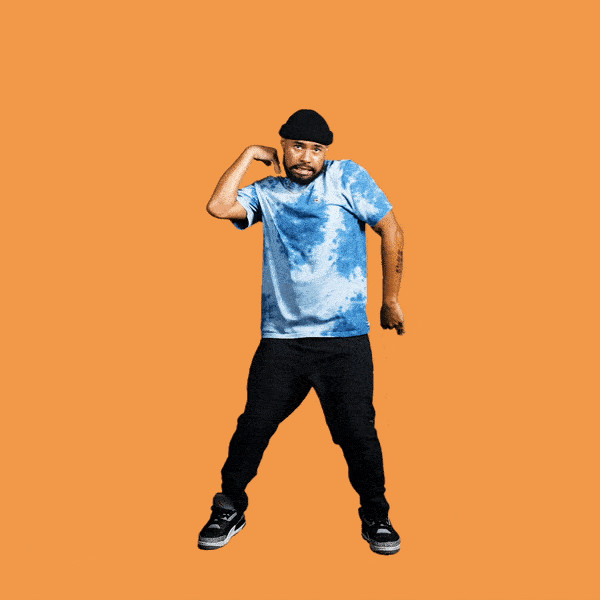Learning How To Dance Simple Moves can unlock a world of fun, fitness, and self-expression. At ten-dance.com, we believe everyone can dance, and we’re here to provide you with easy-to-follow steps and inspiration to get you moving. Whether you’re a beginner or looking to expand your repertoire, our resources will help you master basic dance steps and find your rhythm, enhance your overall dance ability and explore the diverse world of dancing.
1. Why Learn How To Dance Simple Moves?
Learning how to dance simple moves opens up a world of benefits, both physically and mentally. Dancing is not only a fun way to express yourself but also a fantastic form of exercise.
- Physical Health: Dancing improves cardiovascular health, increases flexibility, and strengthens muscles. According to a study by the National Institutes of Health, regular dancing can lower the risk of heart disease by improving cholesterol levels and blood pressure.
- Mental Well-being: Dancing releases endorphins, which can reduce stress and improve mood. A study published in the Journal of Applied Gerontology found that dancing can enhance cognitive abilities and social interaction, leading to a greater sense of well-being.
- Social Connections: Joining dance classes or social dance events provides opportunities to meet new people and build lasting friendships.
- Self-Confidence: Mastering new dance moves can boost your self-esteem and make you feel more comfortable in social settings. As stated by the American Dance Therapy Association, dance can be a powerful tool for self-discovery and personal growth.
- Coordination and Balance: Regular dance practice enhances coordination and balance, which are crucial for overall physical health.
By learning simple dance moves, you can enjoy these benefits and more. Let’s explore some easy dance steps you can start with today!
2. Top 5 Simple Dance Moves for Beginners
What are the easiest dance moves to learn? For those just starting their dance journey, a few foundational steps can provide a great base. Here are five simple dance moves perfect for beginners:
- The Two-Step: This fundamental move involves stepping from side to side to the beat, allowing you to groove and enjoy the music effortlessly.
- The Monestary: Building on the Two-Step, this move incorporates tapping your feet to the front with your knees and feet turned inward, combined with circular arm and shoulder movements.
- The Woah: A popular move seen on TikTok and other social media platforms, the Woah involves a sharp, pronounced locking arm motion to accent the heaviest bass beats in your favorite songs.
- The Dougie: Shifting your weight from side to side with added shoulder movements, the Dougie is a fun and versatile move that works with any hype beat.
- The Billy Bounce: This club-ready move features a knee bounce, where your knees come inward on each bounce, combined with an upward kick on each side.
These moves are easy to learn and can be mixed and matched to create your own unique dance style.
3. Breaking Down the Two-Step: Your First Dance Move
The Two-Step is often the first dance move that comes naturally to beginners. It’s a simple, foolproof way to groove and enjoy the music. How do you perform the two-step? Here’s a step-by-step guide:
- Start with your feet together. Stand with your feet shoulder-width apart, ready to move.
- Step to the right. Take a step to your right with your right foot.
- Bring your left foot to meet your right foot. Step your left foot next to your right foot.
- Step to the left. Take a step to your left with your left foot.
- Bring your right foot to meet your left foot. Step your right foot next to your left foot.
- Repeat. Continue stepping from side to side, keeping a steady rhythm.
Tips for Mastering the Two-Step:
- Listen to the music: Feel the beat and let the music guide your steps.
- Stay relaxed: Avoid tensing up; let your body flow with the rhythm.
- Add some flair: Incorporate slight knee bends or arm movements to make the move your own.
- Practice: The more you practice, the more natural the Two-Step will feel.
With a little practice, you’ll be two-stepping with confidence and ease.
4. Adding Flair: How To Dance Simple Moves with Style
Once you’ve mastered the basic steps, it’s time to add your personal flair. How can you make simple dance moves look more stylish? Here are some tips:
- Arm Movements: Incorporate arm movements that complement your footwork. Try swinging your arms, making circles, or adding hand gestures.
- Facial Expressions: Let your personality shine through with your facial expressions. Smile, wink, or make playful faces to connect with the music and your audience.
- Body Language: Use your body to express the mood of the music. Sway your hips, bend your knees, and move your shoulders to create a dynamic performance.
- Transitions: Smooth transitions between moves are key to creating a seamless dance routine. Practice linking different steps together to maintain a fluid motion.
- Confidence: The most important element of style is confidence. Believe in yourself and your moves, and your passion will shine through.
Remember, dancing is about expressing yourself and having fun. Don’t be afraid to experiment and find your unique style.
5. Expanding Your Repertoire: More Simple Dance Steps
Ready to learn more simple dance steps? Here are a few additional moves to add to your repertoire:
- The Hip Sway: A classic move that involves swaying your hips from side to side while keeping your upper body relatively still.
- The Grapevine: A series of steps to the side, crossing one foot in front of the other and then stepping out again.
- The Heel Tap: Tapping your heel on the ground in time with the music, adding a fun and rhythmic element to your dance.
- The Pivot Turn: Turning your body 180 degrees on the balls of your feet, creating a smooth and controlled rotation.
- The Shuffle: A quick and energetic move that involves sliding your feet back and forth across the floor.
Practice these moves individually and then try combining them into a short routine.
6. Learning Resources: Where To Find Simple Dance Tutorials
Where can you find easy-to-follow dance tutorials? With the rise of online learning, there are numerous resources available to help you learn how to dance simple moves. Here are some of the best:
- ten-dance.com: Offers a wide range of dance tutorials for all skill levels, from beginner to advanced. Our step-by-step instructions and expert instructors make learning fun and accessible.
- YouTube: A treasure trove of free dance tutorials. Search for “beginner dance tutorials” or specific dance moves to find videos that suit your learning style.
- STEEZY Studio: A subscription-based platform offering structured dance classes in various styles, with detailed instructions and personalized feedback.
- Dance Studios: Local dance studios often offer beginner classes in various styles. These classes provide in-person instruction and the opportunity to learn alongside other students.
- Online Communities: Joining online dance communities, such as forums or social media groups, can provide support, encouragement, and access to additional learning resources.
Explore these resources and find the ones that work best for you.
7. Incorporating Simple Moves into Different Dance Styles
One of the great things about learning simple dance moves is that they can be incorporated into various dance styles. How do you adapt simple moves to different genres? Here are some examples:
- Hip Hop: Use the Two-Step as a foundation for more complex hip hop moves. Add attitude and swagger to your movements to capture the essence of the style.
- Salsa: Incorporate hip sways and pivot turns into your salsa dancing to create a sensual and rhythmic performance.
- Country: Use the Grapevine and heel tap in your country line dancing to add a touch of traditional flair.
- Ballroom: Adapt the Two-Step and pivot turn to fit the elegant and graceful movements of ballroom dancing.
- Electronic Dance Music (EDM): The shuffle and other energetic moves work perfectly with the fast-paced and high-energy music of EDM.
By adapting simple moves to different dance styles, you can expand your versatility and create your own unique fusion of styles.
8. The Importance of Practice and Repetition
Like any skill, mastering dance moves requires practice and repetition. How can you make practice more effective? Here are some tips:
- Set Realistic Goals: Start with simple goals, such as mastering one new move per week. As you progress, gradually increase the difficulty of your goals.
- Practice Regularly: Set aside dedicated time for practice, even if it’s just for 15-20 minutes each day. Consistency is key to building muscle memory and improving your technique.
- Break Down Complex Moves: If you’re struggling with a particular move, break it down into smaller steps and practice each step individually.
- Use a Mirror: Practice in front of a mirror to monitor your form and identify areas for improvement.
- Record Yourself: Record yourself dancing and review the footage to identify areas where you can improve your technique and style.
- Be Patient: Don’t get discouraged if you don’t see results immediately. Learning to dance takes time and effort. Be patient with yourself and celebrate your progress along the way.
With consistent practice and dedication, you’ll be amazed at how quickly you improve your dance skills.
9. Staying Motivated: Tips for Keeping the Dance Fire Alive
Keeping the dance fire alive requires staying motivated and engaged. How can you maintain your enthusiasm for dancing? Here are some tips:
- Set Goals: Having clear goals, such as performing in a dance showcase or mastering a specific routine, can provide a sense of purpose and motivation.
- Find a Dance Buddy: Partnering with a friend or fellow dancer can provide support, encouragement, and accountability.
- Join a Dance Class or Group: Joining a dance class or group can provide a sense of community and access to new learning opportunities.
- Attend Dance Events: Attending dance events, such as concerts, competitions, or workshops, can inspire you and expose you to new styles and techniques.
- Celebrate Your Progress: Take time to acknowledge and celebrate your achievements, no matter how small.
- Explore New Styles: Don’t be afraid to try new dance styles and explore different forms of expression.
- Listen to Music: Listen to music that inspires you and makes you want to move.
- Watch Dance Videos: Watch dance videos and performances to learn from the best and get inspired.
- Take Breaks: If you’re feeling burnt out, take a break from dancing and recharge your batteries.
By following these tips, you can stay motivated and engaged in your dance journey for years to come.
10. Safety First: Avoiding Injuries While Learning How To Dance Simple Moves
While dancing is a fun and beneficial activity, it’s important to prioritize safety to avoid injuries. How can you prevent injuries while learning simple dance moves? Here are some tips:
- Warm Up: Always warm up before dancing to prepare your muscles and joints for activity. Include stretches, light cardio, and dynamic movements.
- Cool Down: Cool down after dancing to help your muscles recover and prevent stiffness. Include static stretches, holding each stretch for 20-30 seconds.
- Use Proper Form: Pay attention to your form and technique to avoid putting unnecessary stress on your joints and muscles.
- Listen to Your Body: If you feel pain, stop dancing and rest. Don’t push yourself too hard, especially when you’re just starting out.
- Stay Hydrated: Drink plenty of water before, during, and after dancing to stay hydrated and prevent muscle cramps.
- Wear Appropriate Footwear: Wear shoes that provide support and cushioning, and that are appropriate for the type of dancing you’re doing.
- Dance on a Safe Surface: Avoid dancing on hard or uneven surfaces that can increase the risk of injury.
- Take Breaks: Take breaks during long dance sessions to rest and prevent fatigue.
- Seek Professional Guidance: If you have any pre-existing injuries or medical conditions, consult with a doctor or physical therapist before starting a dance program.
By following these safety tips, you can minimize your risk of injury and enjoy a long and healthy dance journey.
Dancing is a fantastic way to express yourself, get exercise, and have fun. By learning how to dance simple moves, you can unlock a world of opportunities and discover the joy of movement. Whether you’re a beginner or an experienced dancer, there’s always something new to learn and explore. Join us at ten-dance.com and start your dance adventure today! Discover comprehensive dance lessons, a supportive community, and exciting events all designed to fuel your passion for dance.
FAQ: Your Questions About Learning Simple Dance Moves Answered
1. What are the best simple dance moves for absolute beginners?
The Two-Step, the Woah, and basic hip sways are excellent starting points, focusing on rhythm and simple coordination. These moves are easy to grasp and build confidence.
2. How long does it take to learn basic dance moves?
With regular practice (30 minutes a few times a week), you can learn the basics of a simple dance move within a week or two. Continued practice refines the movement.
3. Do I need a dance partner to learn simple moves?
No, many simple dance moves can be learned and practiced solo. Styles like hip hop and contemporary are perfect for solo practice.
4. What’s the best way to practice dance moves at home?
Use online tutorials, practice in front of a mirror to check your form, and record yourself to identify areas for improvement. Regular practice is key.
5. What should I wear when learning to dance?
Wear comfortable clothing that allows you to move freely. For footwear, choose shoes that provide support and don’t restrict your movement.
6. How can I make my dance moves look more natural and less stiff?
Relax, feel the music, and focus on enjoying the movement. Avoid overthinking the steps; let your body flow with the rhythm.
7. Are there any specific warm-up exercises I should do before dancing?
Yes, include light cardio like jogging in place, dynamic stretches like arm circles and leg swings, and joint rotations to prepare your body for dancing.
8. How can I find local dance classes for beginners in my area?
Check online directories like Yelp or Google Maps, or visit local community centers and gyms to inquire about dance classes for beginners.
9. What are some common mistakes beginners make when learning to dance?
Common mistakes include not warming up properly, trying to learn too many moves at once, and not listening to the music. Focus on mastering one move at a time.
10. How can I stay motivated when learning to dance gets challenging?
Set realistic goals, find a dance buddy, celebrate your progress, and remind yourself why you started dancing in the first place. Enjoy the journey!
 Woman having fun dancing at home, enjoying the freedom of movement
Woman having fun dancing at home, enjoying the freedom of movement
 Diverse group of people participating in a dance class, building community and skills together
Diverse group of people participating in a dance class, building community and skills together
 Person confidently performing a dance move, showcasing self-expression and body awareness
Person confidently performing a dance move, showcasing self-expression and body awareness
 Energetic dancer in motion, displaying strength and flexibility
Energetic dancer in motion, displaying strength and flexibility
 Close-up of a dancer's focused expression, showing dedication and passion for dance
Close-up of a dancer's focused expression, showing dedication and passion for dance
 Stylish dancer exuding confidence, inspiring others with their expressive movements
Stylish dancer exuding confidence, inspiring others with their expressive movements
 Elegant dancer gracefully executing a fluid motion, embodying grace and precision
Elegant dancer gracefully executing a fluid motion, embodying grace and precision
 Dynamic dance pose with dramatic lighting, capturing the intensity and emotion of the performance
Dynamic dance pose with dramatic lighting, capturing the intensity and emotion of the performance
 Classic hip-hop move being performed with style, celebrating dance history and innovation
Classic hip-hop move being performed with style, celebrating dance history and innovation
 Bouncy dance move with a unique flavor, adding playfulness and creativity to dance expression
Bouncy dance move with a unique flavor, adding playfulness and creativity to dance expression
Ready to take your dancing to the next level? Visit ten-dance.com today to explore our extensive library of dance lessons, connect with a vibrant community of dancers, and discover exciting events near you. Whether you’re looking to learn a new style, improve your technique, or simply have fun, ten-dance.com has everything you need to ignite your passion for dance. Don’t wait – start your dance journey with us today! For further information, reach out to us at 60 Lincoln Center Plaza, New York, NY 10023, United States, or call +1 (212) 769-7000.


